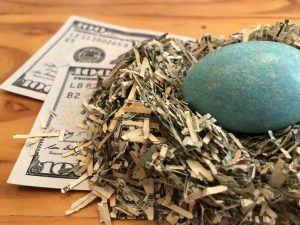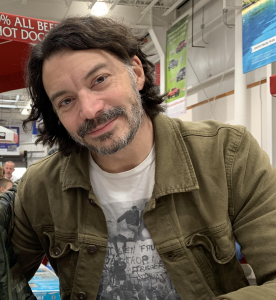HOW I GOT INTO FREELANCING FULL TIME
In December 2017, I was let go from a local tech startup, along with several other members of the marketing team. Layoffs were never something I had experienced directly before, so it was incredibly scary for me. But it was also strangely liberating. I had been unhappy at my job for some time and for years had pondered going full-time on my side-gig as a freelance journalist.
This layoff was just the kick in the pants I needed.
Close to three years later, I’m self-employed as a full-time freelance writer. If you’re considering becoming a freelancer, allow me to pass on some tips:
Do your research
One of the first things I did when I was laid off was research. I had a vague idea of what full-time freelancing encompassed, but I wasn’t sure what my options were for health and life insurance, retirement, and other benefits.  I also had questions about invoicing, contracts, work/life balance, among others. I read and subscribed to as many freelancing blogs as possible, talked with other freelancers about their experiences, and made lots of notes. Here are a few of the freelancing blogs I read to help me get started in my freelance career:
I also had questions about invoicing, contracts, work/life balance, among others. I read and subscribed to as many freelancing blogs as possible, talked with other freelancers about their experiences, and made lots of notes. Here are a few of the freelancing blogs I read to help me get started in my freelance career:
This is one of the first blogs I found that helped me understand the business side of freelancing. You’ll find plenty of advice and tips, but you’ll also find news related to the freelancing industry and resources for all facets of your freelancing journey.
I love this blog by Contently. It covers everything from running your own business, topics like tech and marketing trends, and also has valuable resources to help you in your career. The Freelancer also includes personal stories written by other freelancers about the challenges and successes they’ve had in their business ventures.
This is a blog I’ve been reading for years, way before becoming a freelancer. I used to be terrible about organization and time management. Leo Babauta’s wonderful blog about how to reduce stress and gain control of your time and your life by creating good habits has been a lifesaver for me.
Build your online portfolio
Because of my journalism background, I already had amassed a writing portfolio of published work that proved my writing skills and gave me some clout. This, combined with my marketing and corporate communications experience, helped land me jobs because I had a wide variety of writing skills. Building an online portfolio using platforms such as Pressfolios (which is what I use) helps potential clients see beyond your resume’. Creating a website is also a great option to show off your work and personal brand.
Plan ahead
I can’t stress enough how important it is to plan ahead when starting a freelancing career. Here are the most important lessons I learned when I first started:
- Don’t start freelancing broke. Build a nest egg of money in your bank account to supplement your income during slow
 periods because there will undoubtedly be slow periods. I’d suggest starting with a bare minimum of $2,000 before you freelance full time.
periods because there will undoubtedly be slow periods. I’d suggest starting with a bare minimum of $2,000 before you freelance full time. - Set deadlines – As sure as there are slow periods, you’ll also experience hectic times. Setting deadlines is a must. Use a calendar. I use Google Calendar, which integrates nicely with my Gmail. Be flexible and communicate with your clients often. If you can, plan your work schedule at least one week ahead of time. But it’s always wise to look even further ahead to manage your time accordingly. The Zen Habits blog I mentioned earlier helped a lot with this.
- Save for taxes – Because you’re self-employed, you are responsible for paying your taxes. Your clients won’t take them out of your paychecks, so you’ll have to do that on your own. In my research, I read it’s best to save $200 a month if you can and put it into a savings account exclusively for taxes. I also hired an accountant because doing taxes myself got too complicated working for myself. There are also tools you can use to help you determine what business expenses you can write off for tax purposes. We mentioned the Hurdlr app in our “Five Apps Every Entrepreneur Should Use” blog post, and honestly, I use it every year to track my business expenses and taxes.
Make connections
When I first lost my job, I put out a call on social media asking for anyone who might have any freelance writing gigs available. Because I had an extensive network of friends and business peers, I was able to land my first freelance gig within a day or two of unemployment. Soon, other opportunities came my way as well. A lot of it was word-of-mouth. Some of it was through email newsletters like Morning Coffee Newsletter and job alerts I set up with Indeed and LinkedIn.
Freelancing can be stressful at times. But it’s also the most rewarding career I’ve ever had, affording me opportunities I never thought I would have. It’s also given me newfound confidence and freedom I felt like I was missing from my life, and a chance to explore new creative endeavors. If you’re thinking about becoming a full-time freelancer, be realistic about your strengths and weaknesses, and work to educate yourself as much as possible about what it takes to be self-employed. Planning is essential, but it’s also a leap of faith.
Join NFICA for $5 a year
Besides insightful content to help market your direct sales or small business, NFICA offers entrepreneurs and independent contractors voluntary and group benefits, supplemental health insurance and discounts on travel, office supplies, and more. Join now for exclusive access to these benefits and more.
 Charlie Moss is a freelance journalist and copywriter. He’s been published in the New York Times, Washington Post, The Atlantic, and other publications. He regularly writes marketing content for NFICA and other companies. Read his journalism work on his Pressfolios page.
Charlie Moss is a freelance journalist and copywriter. He’s been published in the New York Times, Washington Post, The Atlantic, and other publications. He regularly writes marketing content for NFICA and other companies. Read his journalism work on his Pressfolios page.